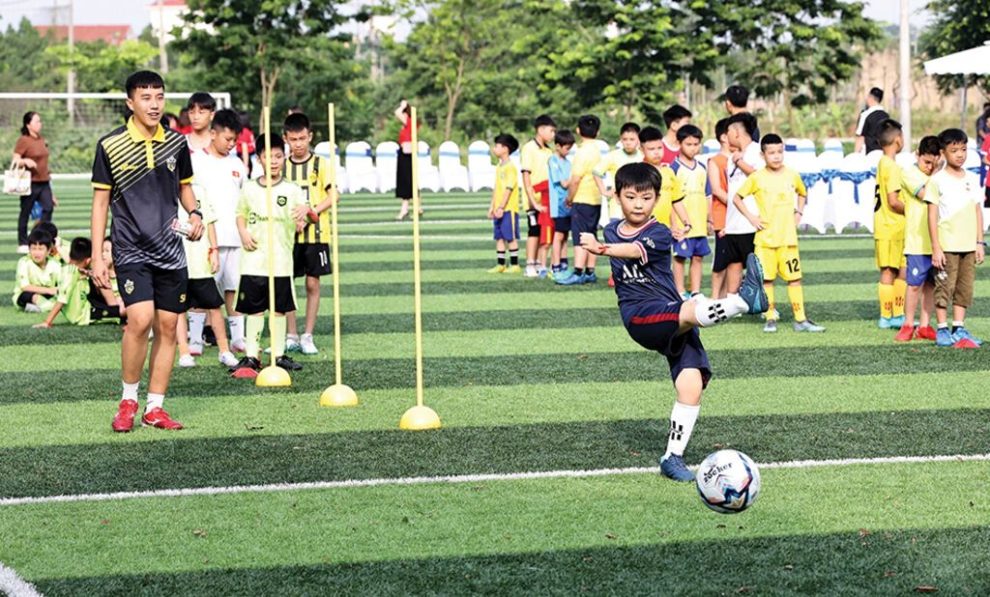Cultural, sports, entertainment and recreational activities are of great importance for the comprehensive development of people, especially children. Good physical and spiritual strength is essential for the full development of children. Correctly perceiving and assessing the current state of cultural and sports institutions for children is very important for their development.
Legal provisions on the rights of children to participate in cultural, sports, entertainment and recreational activities
Cultural, sporting, entertainment and recreational activities constitute a group of basic rights of children, as established in the United Nations Convention on the Rights of the Child of 1989, which entered into force in 1990.
“The child shall have the right to freedom of expression; this right shall include freedom to seek, receive and impart information and ideas of all kinds, regardless of frontiers, either orally, in writing or in print, in the form of art, or through any other media of the child’s choice. The exercise of this right may be subject to certain restrictions but these shall only be such as are provided by law and are necessary; “the right to freedom of thought, conscience and religion; the right to freedom of association and to freedom of peaceful assembly.”
“States Parties recognize the right of the child to rest and leisure, to take part in age-appropriate play and recreational activities and to participate freely in cultural life and the arts. States Parties shall respect and promote the right of the child to participate fully in cultural and artistic life and shall encourage the provision of appropriate and equal opportunities for cultural, artistic, recreational and leisure activities.”
Cultural, sports, entertainment and recreational activities constitute a group of fundamental rights of children, as prescribed by the 2016 Vietnam Law on Children.
The right to entertainment and recreation
Children have the right to participate in entertainment and recreational activities. They have the right to equal opportunities to participate in cultural, artistic, physical exercise, sporting and tourist activities appropriate to their age groups.
The right to preserve and promote identity
Children have the right to have their personal characteristics and values respected according to their age and ethnic culture and to be recognized within family relationships.
Children have the right to use their own language and script, to preserve their identities and to promote the cultural traditions, good customs and practices of their ethnic groups.
The right to freedom of belief and religion
Children have the right to freedom of belief and religion, to follow or not follow any religion, and their safety must be ensured in their best interests.”
With Circular 13/2021/TT/BLDTBXH dated September 30, 2021, the Ministry of Labor, Invalids and Social Affairs issued a set of indexes for monitoring the situation of children and child abuse, and prescribed the administrative handling of acts of child abuse. The statistical index on cultural and sports institutions for children comprises: the percentage of villages or equivalent administrative units with cultural and sports institutions for children; and the rate of communes, neighborhoods and townships with cultural and entertainment venues for children.
Children’s rights to participate in cultural, sporting, entertainment and recreational activities have been recognised both nationally and internationally by law. Therefore, administrations at all levels, sectors and relevant organisations have a responsibility to support children in exercising these rights.
Role of cultural and sports institutions for children
The term “cultural and sports institutions for children” refers to cultural and sports agencies established by the State or social communities according to the law or regulations of sectors or organizations. These institutions aim to meet the cultural, sports, entertainment and recreational needs of children, contributing to the development of a healthy cultural life in local communities.
The system of grassroots cultural and sports institutions plays an important role in disseminating the Party line and state policies and laws. They organize cultural, artistic, physical training and sports activities, thus contributing to building cultural life at the grassroots level and preserving and promoting national cultural identity.
Cultural and sports institutions for children are crucial in organizing cultural, sports, entertainment and recreational activities appropriate to their age, improving their physical and spiritual well-being, and contributing to their comprehensive development.
Cultural and sports institutions also serve as material bases and direct and active instruments for Party Committees and administrations in leading and directing the exercise of children’s rights, and as a tool for building safe and child-friendly communities.
In the current context of national industrialization and modernization, as well as the construction of a new countryside, cultural and sports institutions play an increasingly important role. They mobilize public participation in the exercise of children’s rights and in the organization of cultural and sports activities appropriate to children’s age and social ethical standards, especially those that align with regional and ethnic customs and practices.
In general, cultural and sports institutions, especially those aimed at children, are contributing significantly to sustainable social development.
Current status of cultural and sports institutions
After nearly 40 years of doi moi (renewal), the cultural life of the people in general and of children in particular has seen continuous improvements. The system of cultural and sports institutions has been modernized, effectively meeting the spiritual needs of the population.
However, despite rapid and sustainable development compared to other areas, cultural, sports, entertainment and recreational institutions for children still receive modest investment.
On November 11, 2013, the Prime Minister issued Decision 2164/QD-TTg, approving the 2013-20 master plan for developing grassroots cultural and sports institutions, with a vision toward 2030. These include grassroots cultural and sports institutions serving youth, pioneers, and young pioneers, such as district-level pioneer houses; pioneer palaces; and provincial-level pioneer houses or centers.
Recently, ministries, ministerial-level agencies and localities have actively implemented the measures identified in the Prime Minister’s Decision.
According to a report by the Ministry of Culture, Sports and Tourism, as of the end of August 2022, there were 66 cultural and sports institutions at the provincial level, including cultural centers, cultural and art centers, and cultural and film centers. In addition, 674 of the 704 rural and urban districts had their own cultural and sports centers or cultural houses; and 8,217 of the 10,599 communes, neighborhoods and townships had cultural and sports centers, including those that meet the standards. In addition, 77,380 of the 98,455 villages and hamlets had cultural houses, including those that meet the standards.
So far, 40 provinces and centrally administered cities have allocated land for the construction of cultural and sports institutions, including three provincial-level cultural centres with modern facilities in Bac Lieu, Ben Tre and Quang Binh.
Limitations and challenges
Firstthe current legal framework for cultural, sports, entertainment and recreational institutions for children is incomplete. It only prescribes such institutions under the management of the Central Committee of the Youth Union and does not specify the right of children to benefit from or use common community cultural institutions at all levels.
Secondmany cultural institutions for children and population communities have aged and deteriorated, failing to serve their intended purpose. Many villages or hamlets still lack cultural institutions for children.
ThirdIn some localities, the management of cultural and sporting institutions for children is inadequate; the material bases of these institutions are often misused as markets or for production and business activities. Children’s access to cultural, sporting, entertainment and recreational institutions remains limited due to the lack of specific regulations and guidance.
RoomAccording to the Ministry of Culture, Sports and Tourism, several localities have not reserved areas of land for cultural and sports institutions nor have they invested in their construction.
Fifthmany cultural and sports centres at provincial and district levels have become obsolete, with poor material foundations. They do not meet the cultural, sports, entertainment and recreational needs of the local population, especially children.
Sixthcentral and local budgets, as well as the resources mobilized for investment in equipment and activities of these institutions, remain limited.
Solution Recommendations
Raising awareness and finalizing the legal framework on cultural and sports institutions for children
There is a need to have a broader perception of cultural and sports facilities (audiovisual, reading, writing) at central, provincial, district, communal and village levels, as well as schools. These include swimming pools, libraries, television, radio, museums, children’s books, gymnasiums, cultural centres, sports centres and playgrounds.
It is suggested that specific regulations be drawn up to guarantee children’s access to and benefits from these cultural and sports institutions, addressing their needs for entertainment, recreation, physical training and education.
Mobilizing resources for investment in cultural and sports facilities for children
It is necessary to implement priority policies for synchronous investment in a standard system of cultural and sports institutions from districts to villages, including those for children. Public or public-private construction of cultural and sports facilities for children should be encouraged.
Development of a master plan on management and establishment of operational mechanisms for cultural and sports institutions
Based on the clear definition of the types of cultural and sports institutions in general and those for children in particular, it is necessary to determine their development requirements and plans for each period in line with the socio-economic development of the country and localities.
Agencies managing cultural and sports facilities must draw up specific regulations to facilitate children’s access to these facilities and organize activities to meet their cultural, sports, entertainment and recreational needs.
Improving the efficiency of cultural and sports institutions and facilities for children
The content and methods of cultural and sports activities should be renewed to better meet the demands of children, with a focus on minority children and children with disabilities.
The effectiveness of cultural and sports competitions and festivals should be improved, while grassroots cultural and sports clubs for children need to be established.
Note: This article is republished from VNA through a cooperation agreement between the two parties for the dissemination of journalistic content. Original link.

















Add Comment